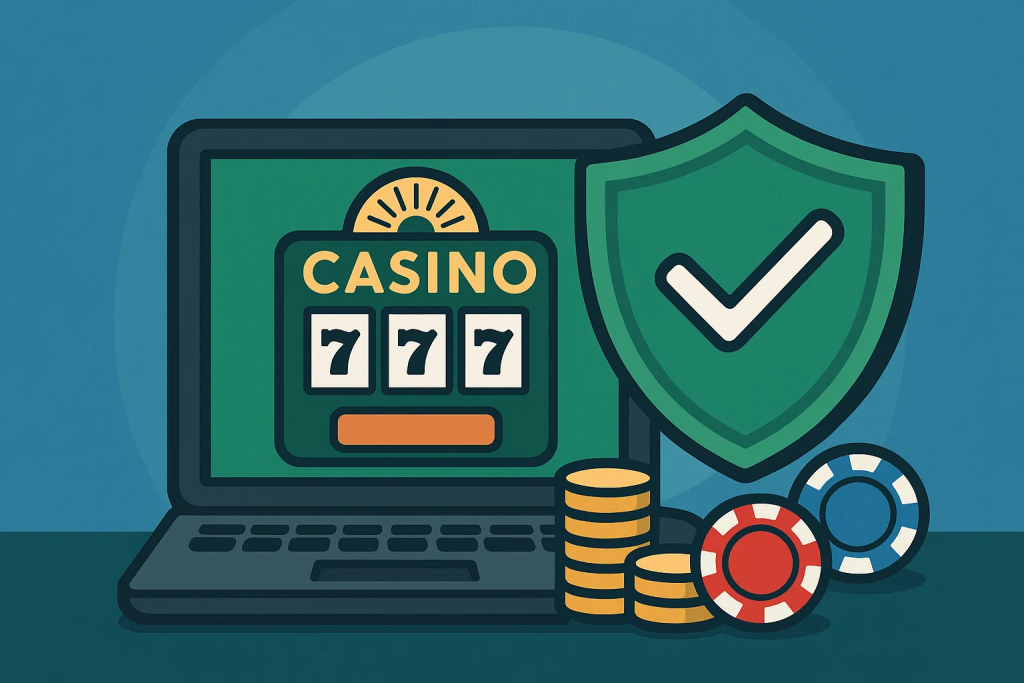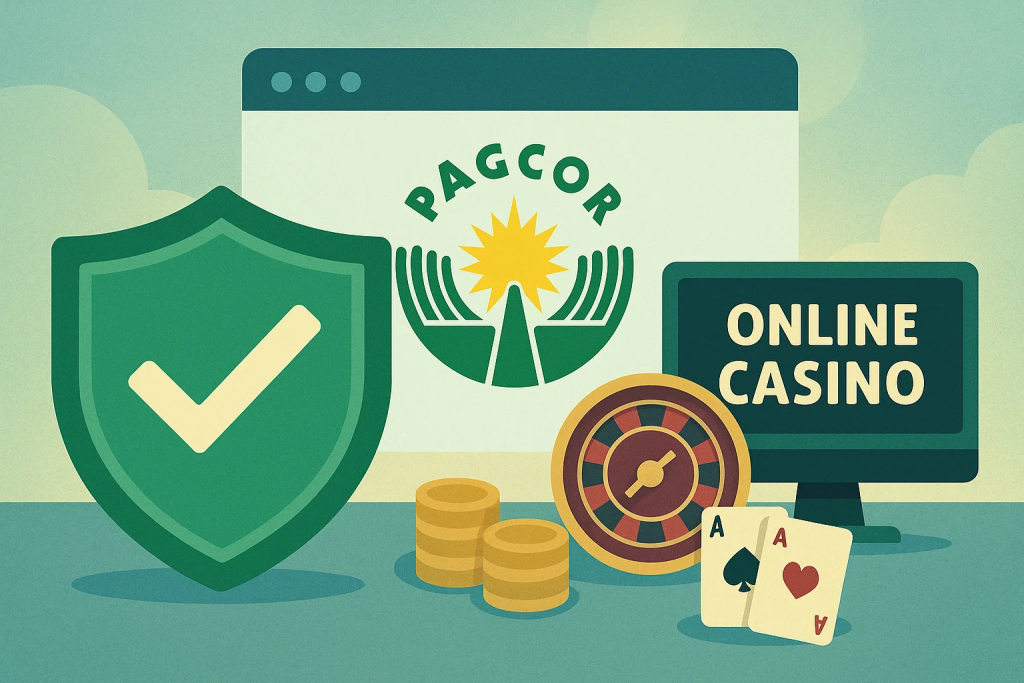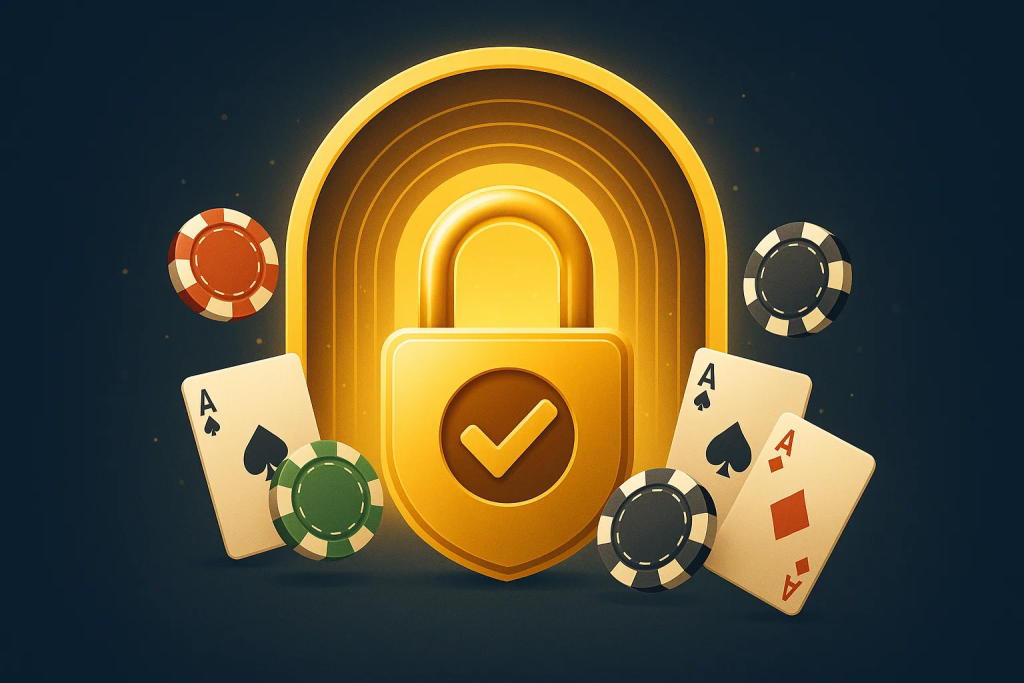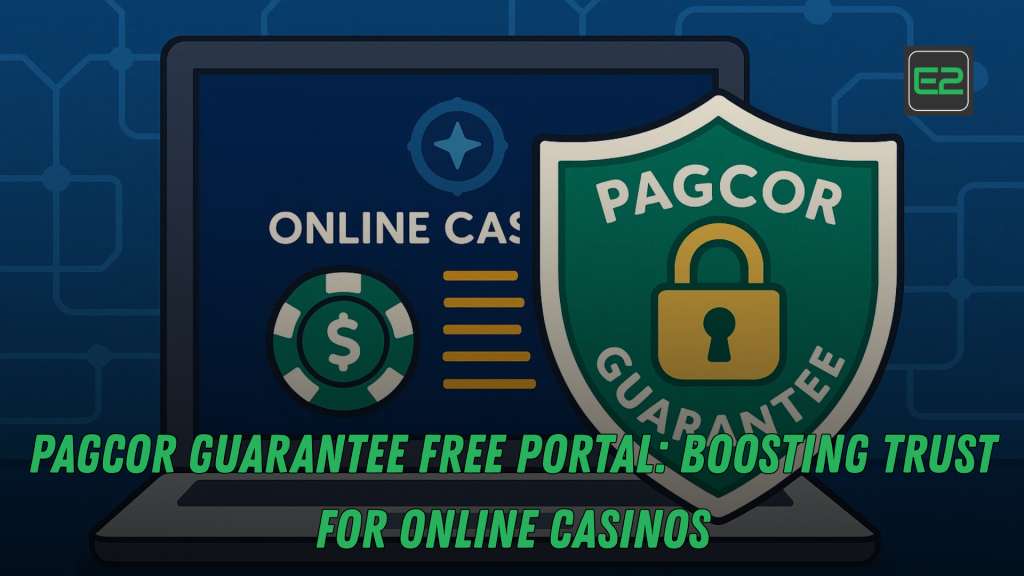Table of Contents
What you’ll get from this guide
- What the PAGCOR Guarantee Portal is and why it was launched in June 2025 to help the public check the legitimacy of online gaming providers amid the rise of fraudulent sites.
- How to use the portal (and supporting PAGCOR lists) to cross-check operators, platforms, and registered domains/URLs—so you can avoid rogue sites and only play at licensed platforms.
- Why this matters right now: the industry is growing fast and regulators are simultaneously cracking down on illegal operators and winding down offshore hubs—players need a simple verification tool to stay safe.
- Actionable checklists for players, brands, and affiliates, plus FAQs and a strong call-to-action to help you verify before you play or promote.

1) The context: trust, safety, and a fast-evolving PH e-gaming landscape
PAGCOR—the country’s gaming regulator—has been vocal that the sector’s growth must be legal, transparent, and player-first. In late 2024 into 2025, news cycles highlighted record revenues and the ongoing clamp-down on illegal operators and offshore hubs, underscoring the need for clean verification tools for ordinary users. The Philippines is a global bright spot for gaming. Land-based integrated resorts continue to thrive, and e-gaming (e-casino, e-bingo, online table games, specialty games, and regulated sports betting) has expanded rapidly.
Against that backdrop, PAGCOR launched the “PAGCOR Guarantee” website on June 18, 2025—a public-facing portal where anyone can check if an online gaming provider is legitimate and duly licensed before signing up or sending money.
Bottom line: With the PAGCOR Guarantee Portal, the regulator is making verification fast, public, and free, so players can dodge scams and choose only licensed operators.
2) What exactly is the PAGCOR Guarantee Portal?
Think of it as the single source of truth for the licensing status of online gaming providers operating under PAGCOR oversight. The site’s purpose is simple: help the public quickly identify legal providers and avoid fraudulent ones. Media announcements emphasized that the portal was built to combat the proliferation of illegal websites, many of which have withheld winnings, lacked responsible-gaming tools, or misused player data.
From coverage at launch:
- Launch date: June 18–19, 2025 (official statements and mainstream news).
- Purpose: “Allow the public to check the legitimacy of online gaming providers before playing or making payments.”
- Scope: Providers are categorized (e-casino, e-bingo, online sports, specialty games, poker operators, etc.) to simplify discovery.
Alongside the portal, PAGCOR regularly publishes official lists of accredited service providers, approved game offerings, and registered domain names/URLs—documents you can consult when you need the exhaustive, line-by-line view of who’s licensed to offer what, and under which domains.
3) How the Portal boosts trust (for players and platforms)
3.1 For players: less guesswork, fewer losses
- Faster checks: Instead of wading through rumor threads or ad pages, players get a regulator-backed yes/no on an operator’s legitimacy.
- Domain-level clarity: Many fraudulent sites imitate brands with look-alike domains. The portal + PAGCOR domain lists help you match the exact URL against what’s registered.
- Better decisions: By pointing users only to licensed operators, the portal reduces exposure to sites that withhold winnings or lack dispute paths.
3.2 For legitimate operators: reputational lift
- Signal of compliance: When a platform appears on the portal and official lists, it gains instant credibility with media, affiliates, and users.
- Less confusion: Bad actors spoof brands. A government verification page gives customer service teams a shareable link to settle doubts.
- Marketing with guardrails: Brands can educate users to “Check us on the PAGCOR Guarantee site” without divulging back-office documents.
3.3 For the wider industry: cleaner funnels
- The portal complements enforcement actions and the policy decision to wind down offshore hubs, helping redirect players away from illegal or offshore-only sites to licensed domestic e-gaming providers.
4) How to verify an online casino or e-gaming site (step-by-step)
Rule #1: Never deposit until you’ve verified the operator and the domain.
Step 1 — Go to the PAGCOR Guarantee page
Launch the official PAGCOR Guarantee website announced by PAGCOR, which serves as the public verification point for online providers.
Step 2 — Search the operator or platform
Use the portal to look up the brand or provider name. If you’re cross-checking details, consult PAGCOR’s published lists of accredited service providers, approved offerings, and registered domains/URLs.
Step 3 — Confirm the exact domain
Match the URL in your browser with the registered URL shown in PAGCOR documentation. Pay attention to look-alike tricks: extra letters, hyphens, or different top-level domains.
Step 4 — Check the category & game scope
Licensed offerings are typically categorized (e-casino, e-bingo, sports, poker, specialty). Make sure the type of game you intend to play is covered by the operator’s license.
Step 5 — Look for responsible gaming measures
Licensed providers should show age gates, self-exclusion links, and clear terms. News reports noted that many illegal sites lack these protections—a red flag even before you verify licensing.
Step 6 — Walk away if it’s not listed
If a brand or domain is not on the portal or supporting lists, do not create an account or send money. Report suspicious sites to the appropriate channels listed by PAGCOR or your local authorities.
5) Red flags: how scammers try to bypass verification
- Domain impersonation: Wildcard subdomains or hyphenated clones that visually mimic a licensed brand’s URL.
- Fake “seal” images: Static logos claiming “approved” without click-through to the regulator’s page.
- Telegram/DM cash-in schemes: Third-party “agents” offering high bonuses if you deposit via e-wallet—common on social media. PAGCOR has warned that illegal gambling is spreading via these channels.
- No responsible-gaming tools: Missing age gates, no self-exclusion, no loss limits.
- Too-good offers: 100%+ daily cashbacks with no wagering rules spelled out—often a trap to block withdrawals.
Pro tip: A legit site welcomes scrutiny. If support agents dodge licensing questions or refuse to show their registered domain as listed with PAGCOR, that’s your cue to leave.

6) Why the Guarantee Portal launched now (and why timing matters)
Three forces converged:
- Growth + responsibility. News coverage pointed to record industry revenue and larger e-gaming footprints. With more money and newcomers in the system, consumer protection becomes a first-order job.
- Enforcement narrative. Authorities have been cracking down on illegal operators and winding down offshore hubs; a verification site channels legitimate demand and simplifies compliance for players and brands.
- Player pain points. Mainstream reports repeatedly cited withheld payouts and scams by rogue platforms. The portal is a practical fix: check first, then play.
7) For operators & affiliates: how to leverage the Guarantee Portal (without over-promising)
7.1 Operators (B2C brands)
- Add a “Verify us on PAGCOR” micro-banner that links to the Guarantee site and/or the relevant PAGCOR list where your domain appears. Make it clickable; avoid static images that could be copied out of context.
- Publish a licensing explainer page with your legal entity name, category (e-casino/e-bingo/sports/poker/specialty), and a guide that teaches users how to check domains.
- Train support agents to guide users through the portal—this reduces churn from trust issues and strengthens win-back during verification friction.
- Refresh KYC + RG surfacing. Prominently display age verification, self-exclusion, cool-off, and limits. Fraudulent sites often lack these—standing out here builds trust.
7.2 Affiliates (review sites, streamers, creators)
- Disclosure + safety box at the top of each review: “Verify the domain on the PAGCOR Guarantee site before depositing.” Link both the portal and, where applicable, the PAGCOR domain list page.
- Domain-exact links only. If you use redirectors or short links, ensure the final URL matches the registered domain to avoid confusing users.
- Content cadence: Build educational posts—“How to check a PAGCOR license”—to rank for high-intent safety keywords and win long-tail traffic.
- No coverage for unverified brands. If a site is not present on the portal or lists, do not review or promote it.
8) SEO strategy: ranking for “trust” in e-gaming (without keyword stuffing)
8.1 Core keyword clusters
- Primary: PAGCOR Guarantee Portal, verify online casino Philippines, licensed online gaming providers PH, PAGCOR verification, legal e-gaming Philippines.
- Secondary: e-casino verification, e-bingo licensed sites, sports betting Philippines legal, how to check casino license PH.
- Long-tail: how to use PAGCOR Guarantee website, list of PAGCOR registered domains, PAGCOR accredited service providers PDF, avoid illegal online casinos Philippines.
8.2 On-page best practices
- Place primary keywords in the H1, first 100 words, 1–2 subheads, meta title/description (stay within length limits).
- Use FAQPage schema to surface Q&A in search.
- Alt text for images (if any) should emphasize verification, not glamorization of gambling.
- Internal links: responsible gaming resources, legal updates, and your brand’s licensing explainer.
- External links (authoritative): official PAGCOR pages/lists or credible mainstream news explaining the portal and its purpose.
8.3 Content that earns links (safely)
- Walkthrough guide with screenshots (avoid showing sensitive data).
- Case study: “We debunked 10 look-alike domains in 15 minutes using the Guarantee Portal.”
- Quarterly update posts mapping new or updated entries in the PAGCOR lists (domain changes, new platform approvals).
9) Responsible gaming: build it in, not on
Regulated platforms have a duty to implement age checks, self-exclusion, time-outs, deposit limits, and easy access to help lines. A key message in news reports is that illegal sites often do not offer these protections, leading to harm and eroding public trust. Your trust page should feature:
- Clear age restriction and ID verification steps
- Self-exclusion and cool-off forms or links
- Deposit/loss limits and reminder nudges
- Links to support (counselling, hotlines)
- A how-to verify us on PAGCOR section that uses the portal and domain lists as anchors.
10) A quick player’s checklist (print or save)
- ☐ Visit the PAGCOR Guarantee portal and search the provider.
- ☐ Cross-check the exact domain with PAGCOR’s registered URL lists.
- ☐ Confirm the game category you want is covered (e-casino, e-bingo, sports, poker, specialty).
- ☐ Look for responsible gaming tools on the site; abandon if missing.
- ☐ Ignore social-media DMs and “agent” deposits—go direct via the official domain.
- ☐ If not listed, don’t play; report the site.
11) Roadmap: what we expect next from the Guarantee ecosystem
- Broader categorization & filters: As adoption grows, expect more granular filters (by game type, brand family, or jurisdiction notes). Launch communications already referenced categorized providers for accessibility.
- Faster list refreshes & APIs: Operators and wallets may eventually ping verification endpoints to validate domains at point-of-deposit.
- Deeper player education: Expect more how-to guides from PAGCOR and mainstream media—mirroring the early wave of explainer articles at launch.
- Coordination with enforcement: As offshore hubs wind down per policy, the portal’s role as a traffic cop for legitimate demand will likely increase.
12) Case examples (illustrative)
These summaries are generic patterns based on public coverage and common user scenarios. Always verify specifics via the portal and the official lists.
- Case A: The look-alike trap
A user clicks a paid ad for a brand with stellar reputation but lands on brand-name-casino[.]co instead of the registered .ph/.com domain. A quick check on PAGCOR’s domain list reveals the correct URL; the user avoids a deposit into a rogue gateway. - Case B: The “agent” bonus
A Telegram contact offers a 100% instant cash-in bonus if the player sends funds to an e-wallet. Media alerts warn about illegal operations proliferating in social media channels; the player reports and blocks. - Case C: Affiliate due diligence
A review site plans to add five new brands. The editor cross-checks each operator + domain against the PAGCOR Guarantee portal and registered URL PDFs, listing only verified entries and adding a “how to verify” box to each page.
Cebu’s Brilliant Nustar Resort: The Gamechanger for Visayas Market
13) Content template you can copy (for brands & affiliates)
Title: Is This Online Casino Legit? How to Verify on the PAGCOR Guarantee Portal
Intro (90–120 words): Explain why verification matters; link to the portal.
Section 1: Step-by-step verification (operator → domain → category).
Section 2: Red flags (look-alike domains, missing RG tools, agent deposits).
Section 3: What to do if a site isn’t listed (don’t deposit, report).
CTA: “Check the PAGCOR Guarantee now before you play.”

This single article can rank for long-tail “is X legit?” searches and reduce customer support overhead.
14) Strong call-to-action (for readers)
Before you sign up anywhere, do a 60-second check:
- Open the PAGCOR Guarantee portal.
- Search the provider and match the domain using the registered URL list.
- Only play if both the operator and the exact URL check out.
Need help? Comment with a domain (mask the last two letters) or the exact brand name you’re trying to verify, and we’ll walk you through the steps—no deposits until you’re sure.
